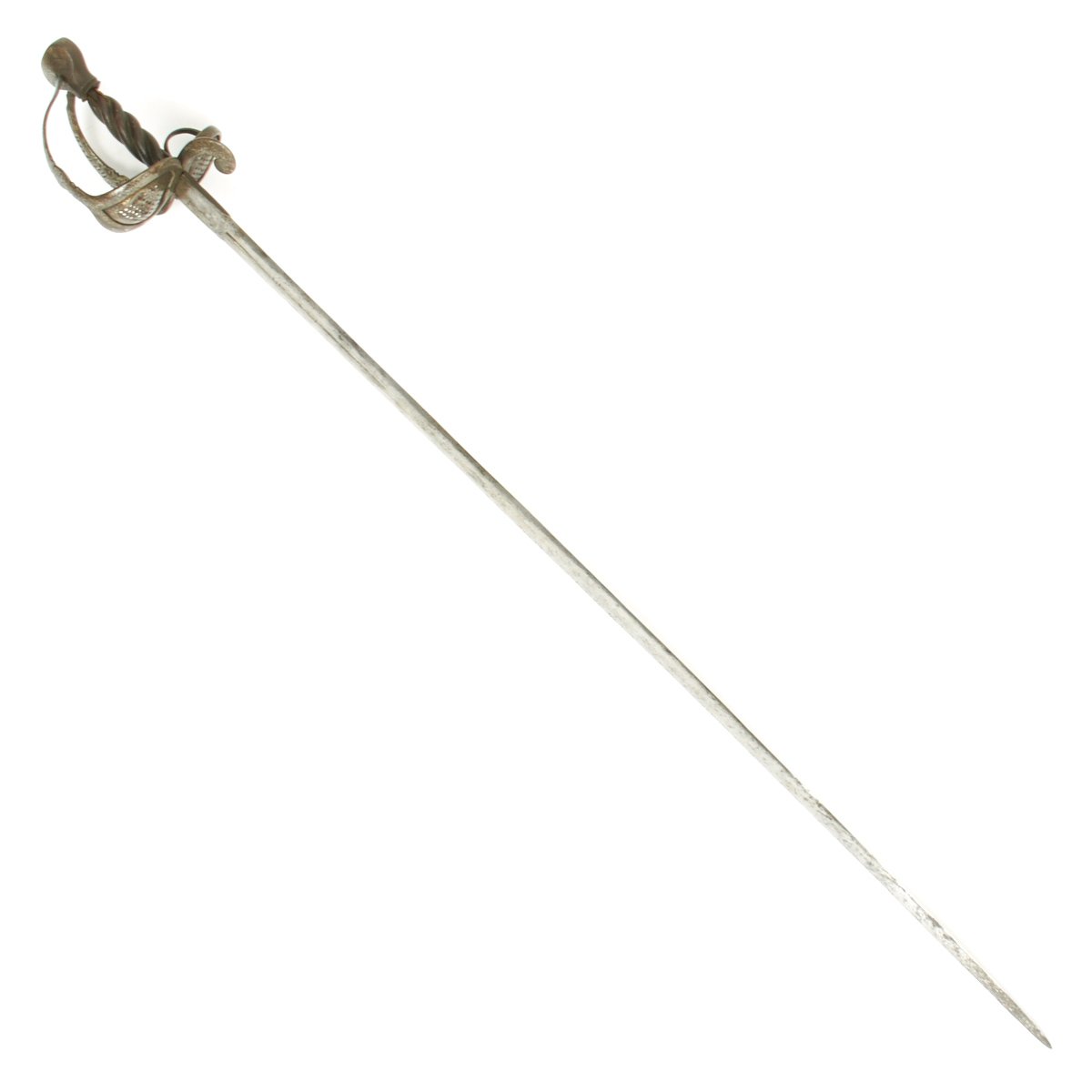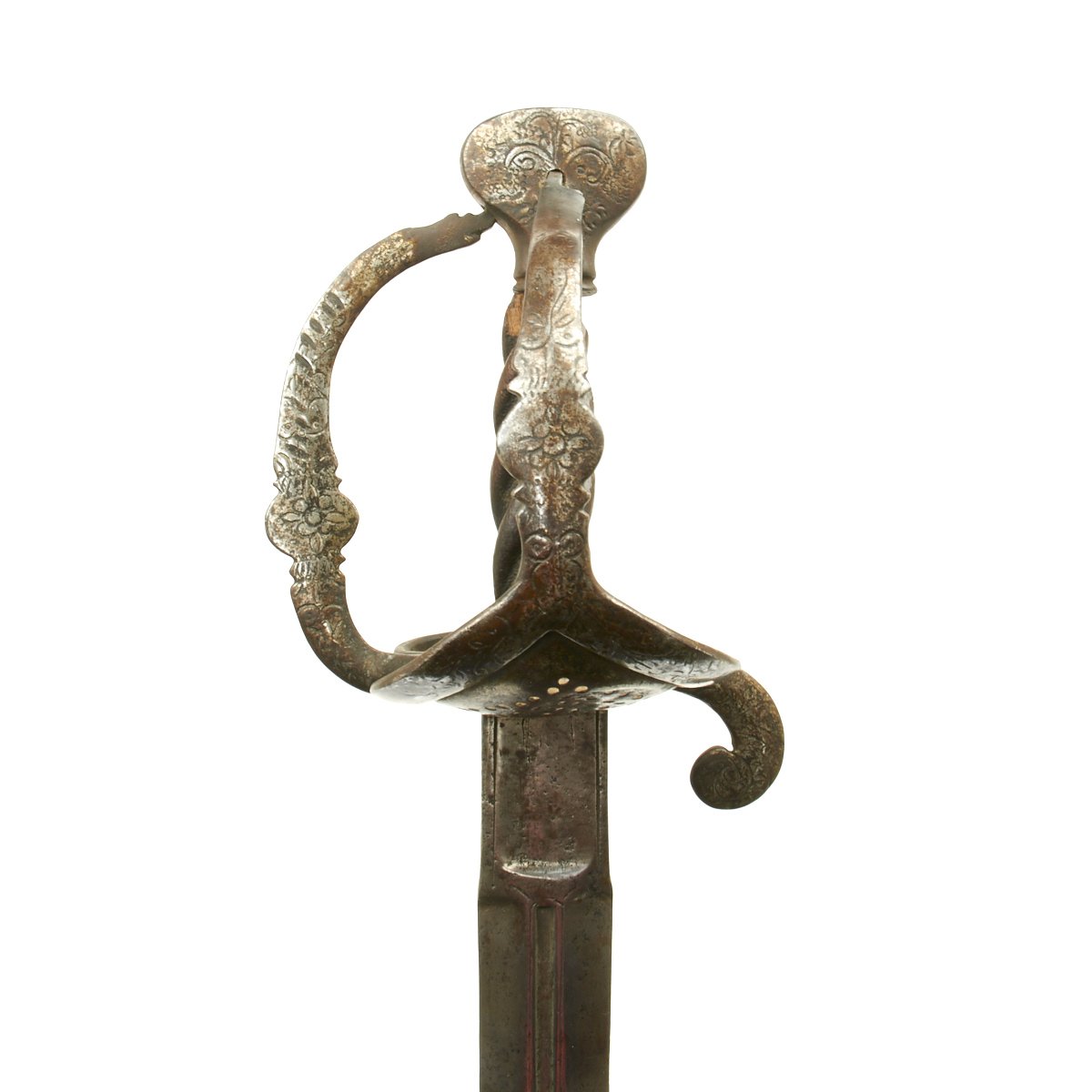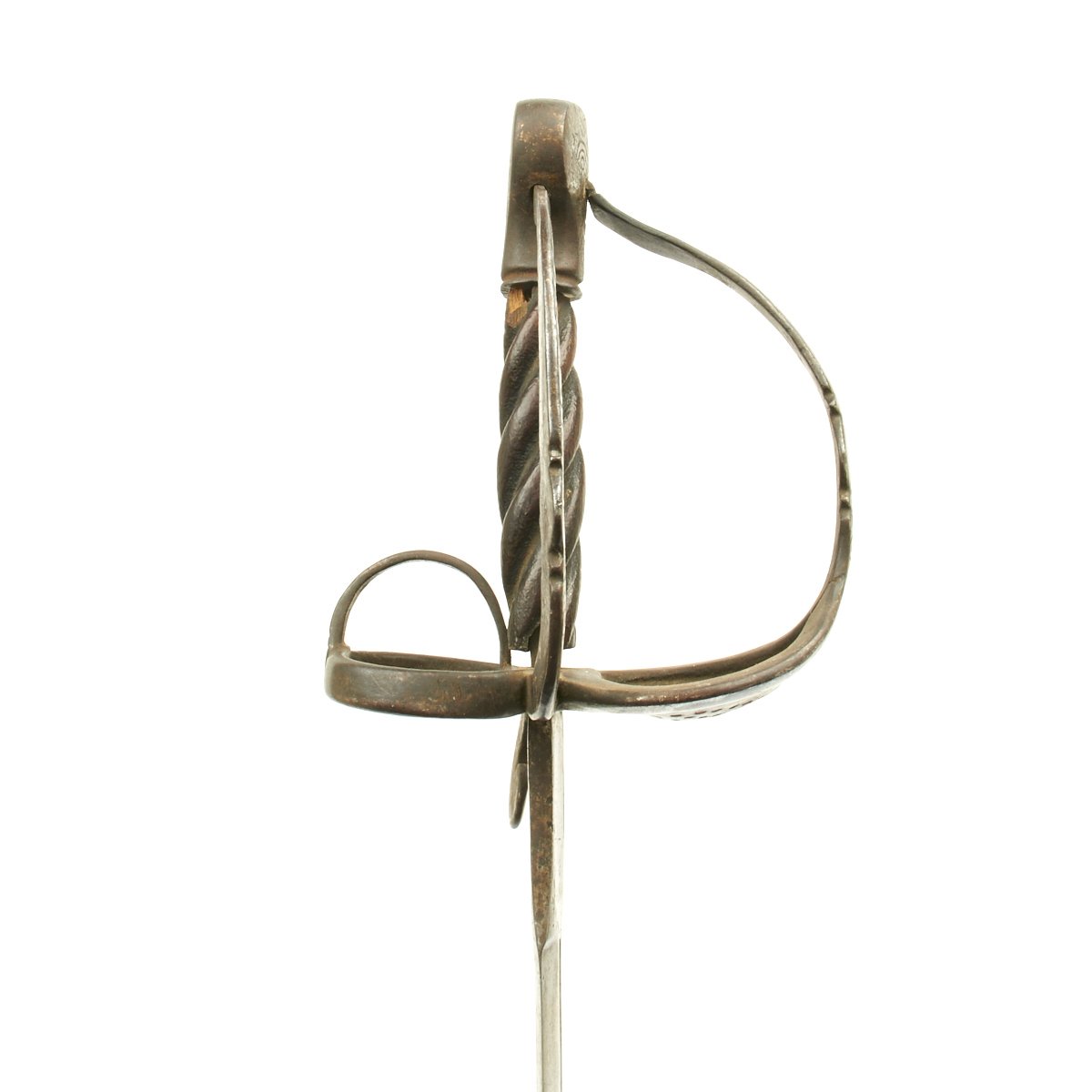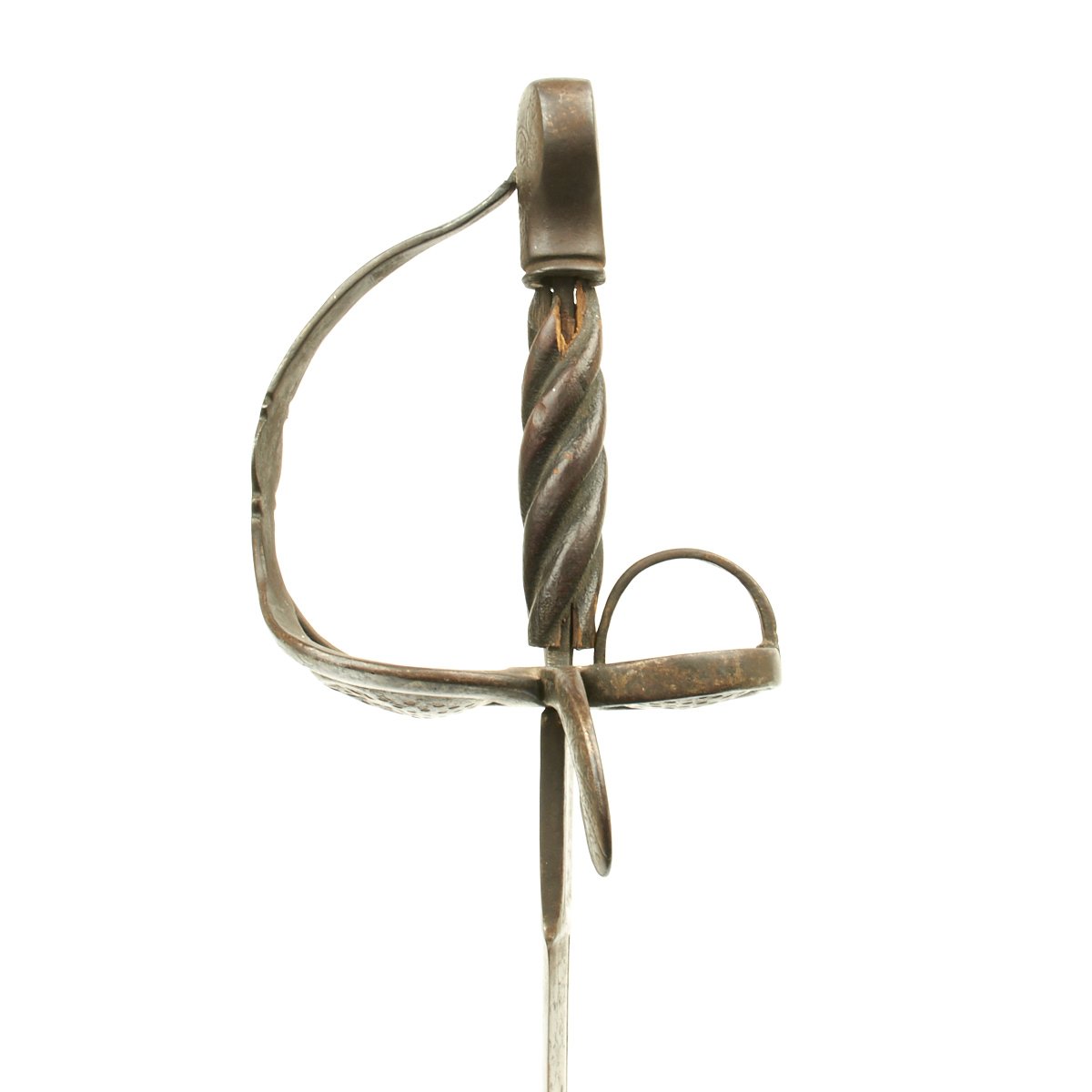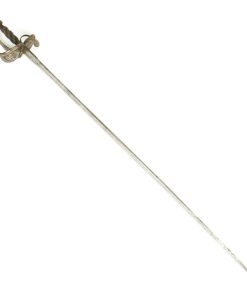Original 17th Century Walloon Broadsword with Older Andrea Ferrara Marked Blade Original Items
$ 3.095,00 $ 773,75
Original Item: One of a Kind. This came to us from one of the most respected Ancient Arms Dealers in the United States, who happens to reside in New York State. What we have here is an absolutely wonderful 17th Century Broadsword known as a “Walloon Sword”, its original design maybe originating in the Walloon section of what we now know as Belgium. In those days it was part of France or part of the Spanish Netherlands. Their work was then considered to best available dating from as early as 1620, but still being made into the 1640’s and later, well in time for the ENGLISH CIVIL WAR.
Double edged blade of 39″ with one fuller only running about 8″ down the center on either side. Inside the fullers there are markings which we are assured are the Maker Marks of the very famous blade maker ANDREA FERRAR, and the blade is very typical of his work. The hilt is of worked iron with a double bow guard incorporating two heart shaped perforated guard shields to protect the sword hand. In most cases these perforated heart shaped guard plates are just absent or even perhaps removed. In this case everything is COMPLETE.
The decorated barley shaped pommel is engraved to match the rest of the iron hand guard. The grip is of wood and is of spirally carved wood no doubt originally covered in leather, no longer present. This Sword is 45″ in overall length and is truly magnificent and very early, being prior to the English Civil War. It might even have seen service in the first Colonies in the New World.
In excellent display condition.
History of Swordmaker Andrea Ferrara
Andrea Ferrara was born in Fonzaso in Italy (which is located in the province of Belluno-Dolomiti) and was an active and esteemed producer before and after his staying in Scotland (the ruins of his workshop are still in Belluno in the place called Busighel, near the river Ardo). This confirms the general belief reported by Scott that Ferrara was a Spanish or Italian artificer who was brought to Scotland in the early sixteenth century by James III to instruct the Scots in the manufacture of the high-quality steel blades current in Renaissance Europe.
According to some sources the name of the manufacturer was Andrea dei Ferrari of Belluno, according to others, Andrew Ferrars or Ferrier of Arbroath.
The term came to be used generically as a term for the Scottish basket-hilted broadsword. If the sword was of high quality it was referred to as a “true Andrew Ferrara”. Grose says “the common name of the glaymore, or Highland broad sword”.
His method of manufacture remains much a mystery, but it is suspected that they were made by interlamination, a process of welding the blade in alternate layers of iron and steel. The blades were special in their extreme flexibility. It is said that Ferrara himself always carried one wrapped up in his bonnet. The blades rarely broke, even under immense force and when used to deal horizontal blows.
Fast Shipping with Professional Packaging
Thanks to our longstanding association with UPS FedEx DHL, and other major international carriers, we are able to provide a range of shipping options. Our warehouse staff is expertly trained and will wrap your products according to our exact and precise specifications. Prior to shipping, your goods will be thoroughly examined and securely secured. We ship to thousands clients each day across multiple countries. This shows how we're dedicated to be the largest retailer on the internet. Warehouses and distribution centres can be located throughout Europe as well as the USA.
Note: Orders with more than one item will be assigned a processing date depending on the item.
Before shipping before shipping, we'll conduct a thorough inspection of the items you have ordered. Today, the majority of orders will be delivered within 48 hours. The delivery time will be between 3-7 days.
Returns
The stock is dynamic and we cannot completely manage it because multiple stakeholders are involved, including our factory and warehouse. So the actual stock may alter at any time. It's possible that you may not receive your order once the order has been made.
Our policy is valid for a period of 30 days. If you don't receive the product within 30 days, we are not able to issue a refund or an exchange.
You can only return an item if it is unused and in the same state as the day you received it. You must have the item in its original packaging.
Related products
Uncategorized
Uncategorized
Band of Brothers ORIGINAL GERMAN WWII Le. F.H. 18 10.5cm ARTILLERY PIECE Original Items
Uncategorized
Uncategorized
Uncategorized
Uncategorized
Uncategorized
Uncategorized
Uncategorized
Angolan Rebel 1970s era 60mm Inert Display Mortar from Angolan Civil War Original Items
Uncategorized
Australian WWII Owen MK1 Machine Carbine SMG Custom Fabricated Replica with Sling Original Items
Uncategorized
Uncategorized
Uncategorized
Armored Burgonet Helmet & Polearm from Scottish Castle Leith Hall Circa 1700 Original Items
Uncategorized
